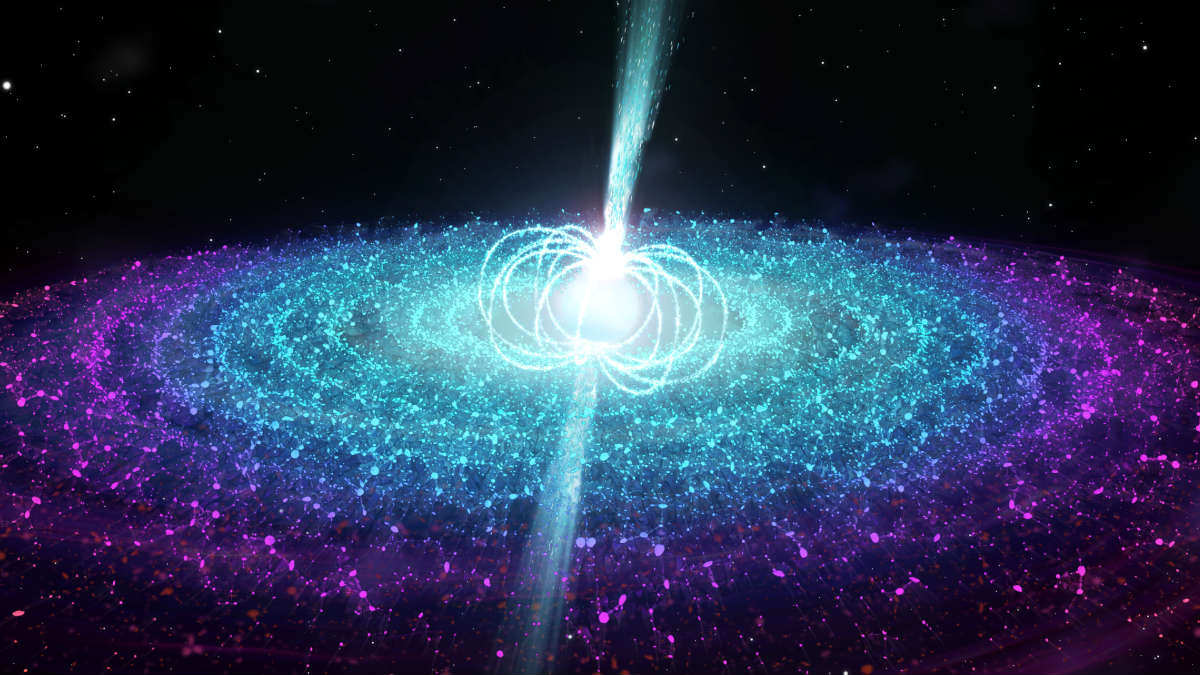
An artist's depiction of a jet emitting light and matter at near-light speeds from a highly magnetic neutron star, like the one scientists have observed for the first time with Swift J0243. The discovery disproves existing theories and sheds new light on how galaxies are formed. (Illustration: ICRAR/University of Amsterdam)
Highly magnetic neutron stars emit jets during accretion, according to new research by an international team of astronomers, including University of Alberta scientist Gregory Sivakoff. The results disprove existing theories of how astrophysical jets are formed.
When objects such as black holes and neutron stars, consume, or accrete, material in space, not all the material in the object's vicinity is consumed. Instead, some material is released in outflows, called jets. "These are well-focused outflows of material that often travel at speeds near that of light," said Sivakoff, co-author and associate professor in the Department of Physics.
And while scientists have known about jets for over 50 years, little is understood about the physics of how these jets are launched.
An international team of researchers observed a highly magnetic neutron star, named Swift J0243, using the Very Large Array radio telescope at the National Radio Astronomy Observatory in New Mexico, USA, and the Neil Gehrels Swift Observatory at NASA. "The radio spectrum of Swift J0243 is the same as that of jets from other sources and evolves in the same way," said Jakob van den Eijnden, lead author and PhD student from the University of Amsterdam. "The radio brightness also follows that of the in-falling gas, as seen in other jet-creating systems. So for the first time ever, we have observed a jet from a neutron star with a strong magnetic field."
In fact, until these findings, it had been believed that it would be impossible for jets to form in these circumstances.
"This paper is important, because it shows the first clear observation of a highly magnetic neutron star that is accreting and launching a jet," added Sivakoff. "This means that we understand less than we thought we did when it comes to jets."
Building an understanding of jets is important because they deposit large amounts of matter and energy into surrounding space. This can have a major impact on the immediate environment, and may affect how entire galaxies form.
"Our goal is to study more highly magnetized neutron stars in the future to find out if the system we observed in this paper is typical or atypical of highly magnetized neutron star systems," said Sivakoff.
The paper, "An evolving jet from a strongly-magnetised accreting X-ray pulsar," was published in Nature(doi: 10.1038/s41586-018-0524-1).